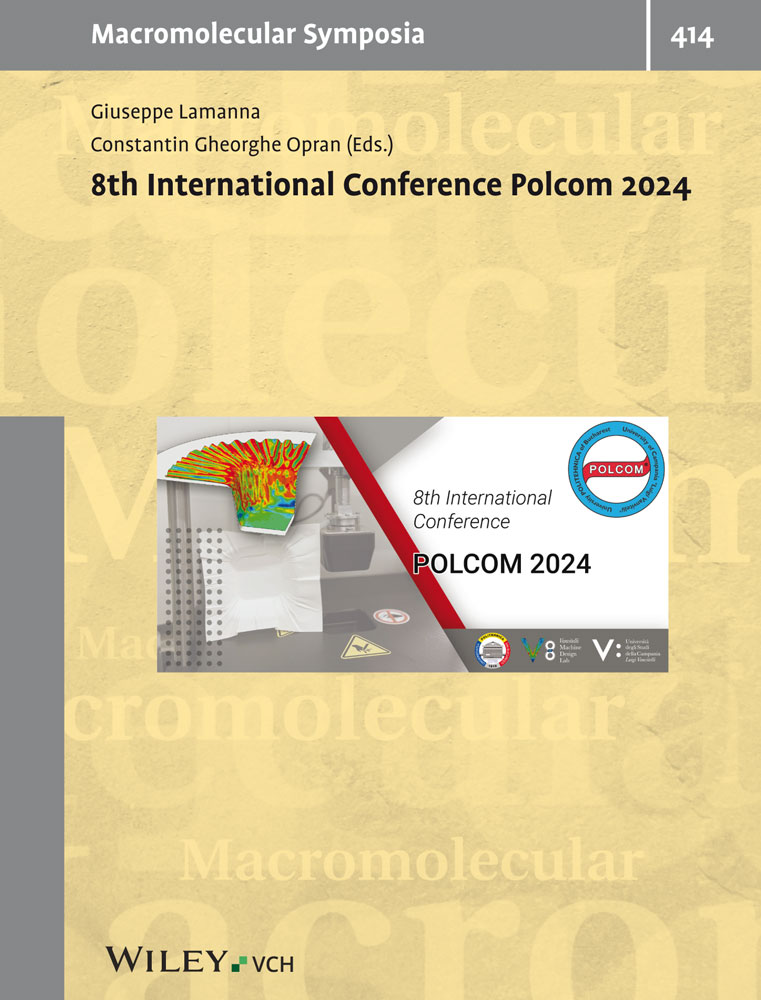Conductive polymer composites (CPC): influence of processing conditions, shear rate and temperature on electrical properties of poly(butylene terephthalate)/poly(amide12-b-tetramethyleneglycol) – carbon black blends
Abstract
Conductive Polymer Composites (CPC) have been obtained by blending two immiscible polymers, poly(butylene terephthalate) (PBT) and poly(amide12-b-tetramethyleneglycol) (PEBAX) with carbon black (CB). The extrusion process allows to obtain anisotrope co-continuous structures of various morphologies depending on composition and experimental conditions. It is possible to enhance CPC conductivity with appropriate processing temperature (Tp) and screw speed (Ω), without changing the composition of the blend. The best results are obtained with Ω =5 rpm and Tp=260°C. PBT/PEBAX-CB resistivity evolution with Tp and Ω doesn't follow a linear law as expected from previous studies with poly(butylene terephthalate)/poly(ethylene)-CB and poly(butylene terephthalate)/poly(ethylene-co-ethyl acrylate)-CB systems. CB distribution has a more important impact on conductivity than polymers phase morphology. A good control of these parameters is essential to reproduce and optimize electrical properties.




